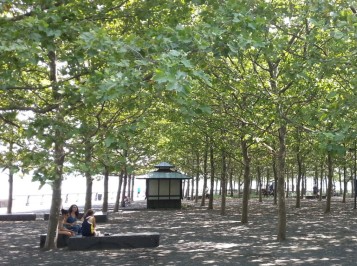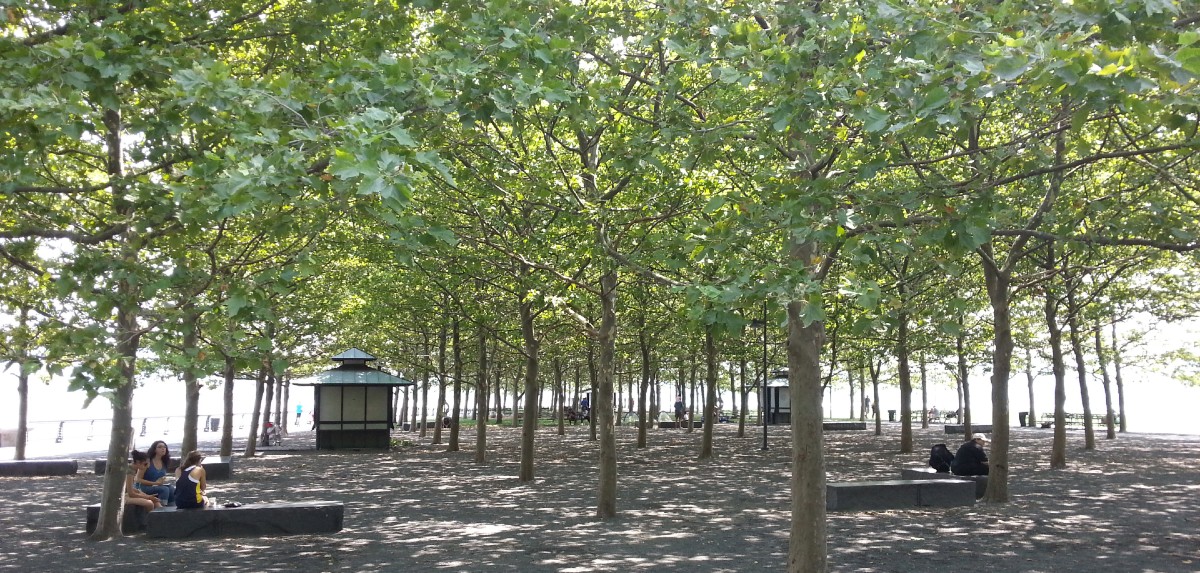On August 5, Hurricane Isaias reached the Northeast Coast of the United States as a tropical storm. Its hurricane-force wind gusts uprooted London Plane trees at Maxwell Place Park, a devastating image. The City of Hoboken determined that several dozen trees could not be saved and needed to be replaced.
When the park at the Hoboken South Waterfront was built in the late 1990s more than 174 London plane trees were planted from Newark to Fourth Streets and a grove of 97 at Pier A Park. These at the South Waterfront survived tropical storm Isaias. The trees at the South Waterfront also survived Superstorm Sandy despite the fact that the tidal surge washed over Pier A Park and the London Plane tree grove. The difference between Hoboken’s South Waterfront and Maxwell Place Park is how the trees were planted.
In 1994, when devising the plans for this park, landscape architects Henry Arnold and Cassandra Wilday implemented an innovative planting technique that has allowed the trees, grass and shrubs to thrive. Throughout Pier A Park and underneath the paved walkway to a depth of three feet is a specially formulated structural “air-entrained soil” that has allowed the roots of the trees to quickly spread horizontally, thus providing for great stability.
Mr. Arnold, the author of Trees in Urban Design, stated, “The key to all of these plantings is the large volume of soil to support and nurture the trees as a group.” In 1999, the American Society of Landscape Architects bestowed upon Pier A Park an award for design. That same year, the Waterfront Center based in Washington, D.C. designated Pier A Park the winner of the Excellence on the Waterfront award. The park got a third award from the New Jersey Society of Landscape Architects.
London Plane trees more than 100 years old predominate in Hoboken’s Church Square Park, Stevens Park and Columbus Park. These trees have become immense, some with trunks three feet in diameter and heights of fifty feet.
The London plane tree is a hybrid between the native American sycamore and the non-native oriental plane tree that first appeared in London in 1645. It quickly became popular in urban parks and streets due to its rugged ability to thrive in polluted air and ability to withstand drought and other adversities. The Worcester Tree Initiative said of the London plane tree, “Beyond its reputation as a survivor, this tree is simply worth admiring. The unique bark and interesting branching give it amazing visual appeal—whether summer or winter.”
Related Links
Landscape design for Columbus Park still shines 108 years later
The morning after Superstorm Sandy: Hoboken’s waterfront parks
Public parks provide essential benefits
Col. Stevens vision for Hoboken still valid 200 years later
Editorial: A Once-in-a-century Opportunity
Plan for the Hoboken Waterfont
Hoboken’s first parks established in 1804
Roots over the river



